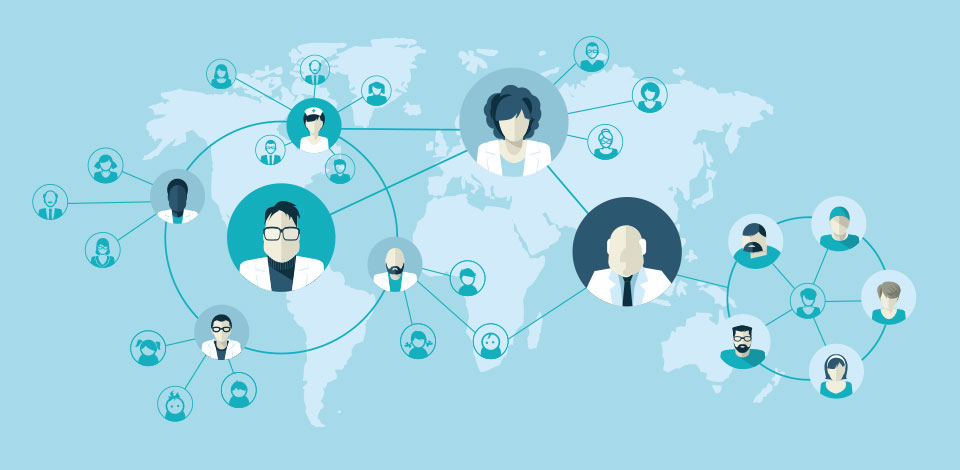
The present global COVID-19 pandemic has highlighted in stark terms some of the fault lines in the present global health care system, particularly as it intersects with patents. Like every other facet of our lives in response to this deadly pandemic, the global health care system is changing. And I don’t believe it will miraculously snap back to pre-pandemic levels when this deadly pandemic is finally over.
That fact alone requires that we move quickly but carefully as the world we remake to response to this heartbreaking and deadly disease will remain when we face the next national health emergency.
At the heart of today’s rapidly changing international patent system is the growing role that the Doha Declaration on TRIPS and Public Health has played in re-balancing the patent-public access fulcrum in response to the present pandemic. The Doha Declaration has served as a catalyst for developing policy coherence at the international level. That coherence seeks to take advantage of Doha Declaration’s strong recognition that the TRIPS Agreement “can and should be interpreted and implemented in a manner supportive of WTO members’ right to protect public health and, in particular, to promote access to medicines for all.” It focuses on the “flexibilities” in TRIPS that the Doha Declaration expressly recognized in Article 5, including (1) interpretive flexibility in accordance with “customary rules of interpretation of public international law;” (2) the right to grant compulsory licenses “and the freedom to determine the grounds upon which such licenses are granted;” and (3) the “freedom” of each Member to establish its own regime for the exhaustion of intellectual property rights (grey market imports) “without challenge.”
As I have indicated elsewhere, TRIPS always had a high level of interpretive flexibility from its inception as a result of its creation of harmonized rules for international IPR protection. That interpretive flexibility, reinforced through the Doha Declaration, is responsible for the growing opportunities for cross border trade in legitimate (non-counterfeit) generics and biosimilars.
TRIPS Article 27 established the first multinational obligation to extend patent protection to qualifying pharmaceuticals. But it also allowed sufficient interpretive flexibility in the application of its harmonized requirements of newness, inventive step and industrial application that countries could differ in their precise application. As a result, the United States, which once was one of the strongest countries for granting patents for biomedical innovations, has developed a “gateway” test for subject matter eligibility that has markedly reduced the number of patents granted for such innovations. Other countries, such as India, have applied stricter efficacy obligations that have reduced the number of “new use” or “evergreen” patents available in their country. Both of these developments have opened new opportunities for the lawful marketing of generics and biosimilars that will undoubtedly survive the resolution of the present pandemic.
TRIPS has always acknowledged the critical role that access to health plays in interpreting its provisions. Article 8 specifically provides: “Members may, in formulating or amending their laws and regulations, adopt measures necessary to protect public health and nutrition … provided that such measures are consistent with the provisions of this Agreement.”
But the Doha Declaration and the resulting Article 31bis, with its associated Annex, provide a critical working framework for COVID-19 because they were created in response to the HIV/AIDS epidemic and its devastating impact on countries with limited to no domestic drug manufacturing capabilities. These countries, such as South Africa, could not take advantage of the compulsory licensing provisions of TRIPS Article 31 because those licenses were only for domestic manufacture. As a result, the Annex to Article 31bis recognized that compulsory licenses could be granted for the importation of patented pharmaceuticals where there are insufficient manufacturing capabilities in the importing country “for the product(s) in question.” Although Article 31bis was focused on assuring access to medicines for least developed countries, the licenses it permits are not so narrowly focused.
I think another critical change between historic TRIPS flexibility and today is the growing application of these flexibilities by developed countries. Nations as diverse as Germany, Canada and Israel have already authorized the importation of grey market drugs to treat the pandemic in their countries.
Perhaps even more significant is the growing recognition that importation rights alone will not provide the necessary security for access to medicines required to fight future national health emergencies. To the contrary there is a growing demand for access to the technology used to create a domestic pharmaceutical industry.
TRIPS Article 7 recognizes “the protection and enforcement of intellectual property rights should contribute to the promotion of technological innovation and to the transfer and dissemination of technology, to the mutual advantage of producers and users of technological knowledge and in a manner conducive to social and economic welfare, and to a balance of rights and obligations.” This obligation was reinforced in Article 66(2) which required developed country members to “provide incentives to enterprises and institutions in their territories for the purpose of promoting and encouraging technology transfer to least-developed country Members in order to enable them to create a sound and viable technological base. Just as South Africa led the expansion of grey market importation rights in response to the HIV/AIDS epidemic, it is leading the way in localization efforts that include seeking technology transfers to assist in domestic manufacturing capabilities. As its Draft IP Policy acknowledges: “While imports are an important source of medicines, increasing domestic capacity by promoting localization will ensure our security of supply, given, inter alia, that the country’s unique disease burden necessitates drugs formulated using specific active pharmaceutical ingredients (APIs) of which global supply is limited.”
South Africa is not the only country to consider greater localization efforts in combatting the pandemic. To the contrary, on August 6th, under an Executive Order on Ensuring Essential Medicines, Medical Countermeasures, and Critical
Inputs Are Made in the United States, President Trump ordered federal agencies to initiate development of federal procurement policies that would maximize local production of “essential medicines” by mandating federal procurement preferences in favor of locally produced products. Current legislation has also been proposed in the United States to ensure that domestic manufacturing capabilities are developed to manufacture drugs included in a to-be-developed list of “essential medicines,” including “the requisite active pharmaceutical ingredients and starting materials of such drugs.” This focus on expanding local manufacturing capabilities gives renewed life to the local working obligations under Article 5 of the Paris Convention for the Protection of Industrial Property.
Finally, we are seeing greater international cooperation in the form of multinational voluntary patent licensing regimes and patent distribution plans. For example, the Medicines Patent Pool (MPP) established in 2010 by Unitaid has expanded its voluntary patent licensing pool to include COVID-19. I think of greater significance may be the establishment this year of the COVID 19 Technology Access Pool (C-TAP) by the World Health Organization. C-TAP has gone beyond patent licenses to include pledges and commitments to voluntarily share “COVID-19 health technology related knowledge, intellectual property and data.”
In an era when artificial intelligence is already having a positive impact on the costs for pharmaceutical R&D and clinical testing, and when digital health care has become a growing reality, this acknowledgement of the need for access to technologies underscores that the demand for technology to support localized drug production is only one portion of a growing need for access to a broader range of technologies to ensure access to healthcare in all its deliverables and manifestations.
I agree that voluntary licenses and “pools” serve as a useful adjunct to other health care access measures. But they are not “THE SOLUTION.” To the contrary, similar to industry self-regulation, companies will only license what they consider to be in their own self-interest to release. This strongly suggests that critical technologies and medicines will most likely not be made part of these voluntary processes, which largely appears true to date.
Moreover, as others have pointed out, even the scope of voluntary licenses may not be fulsome enough to promote localization. To the contrary, some are only for distribution. Those limitations do not assist in developing in-country knowledge that can lead to a domestic manufacturing industry in support of local needs for access to medicines.
The clearest example of the cross border sharing of R&D related to the current pandemic is the race to uncover a vaccine. Recent reporting indicates that over 50 drugs are in various research and clinical testing phases in 16 countries. We can only hope that present changes in cross border trade continue to grow so that when a vaccine is found it is available for all who need it.



